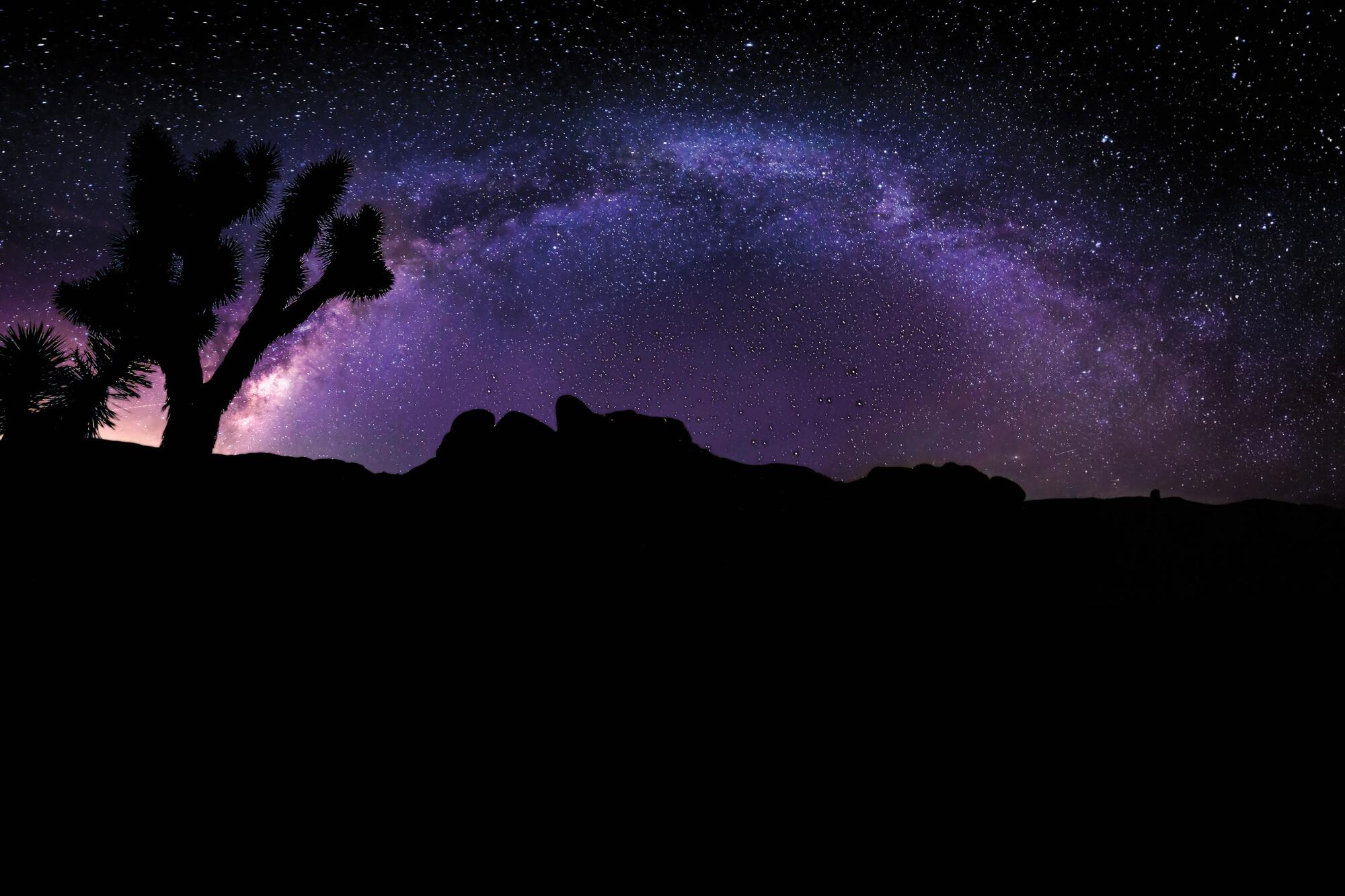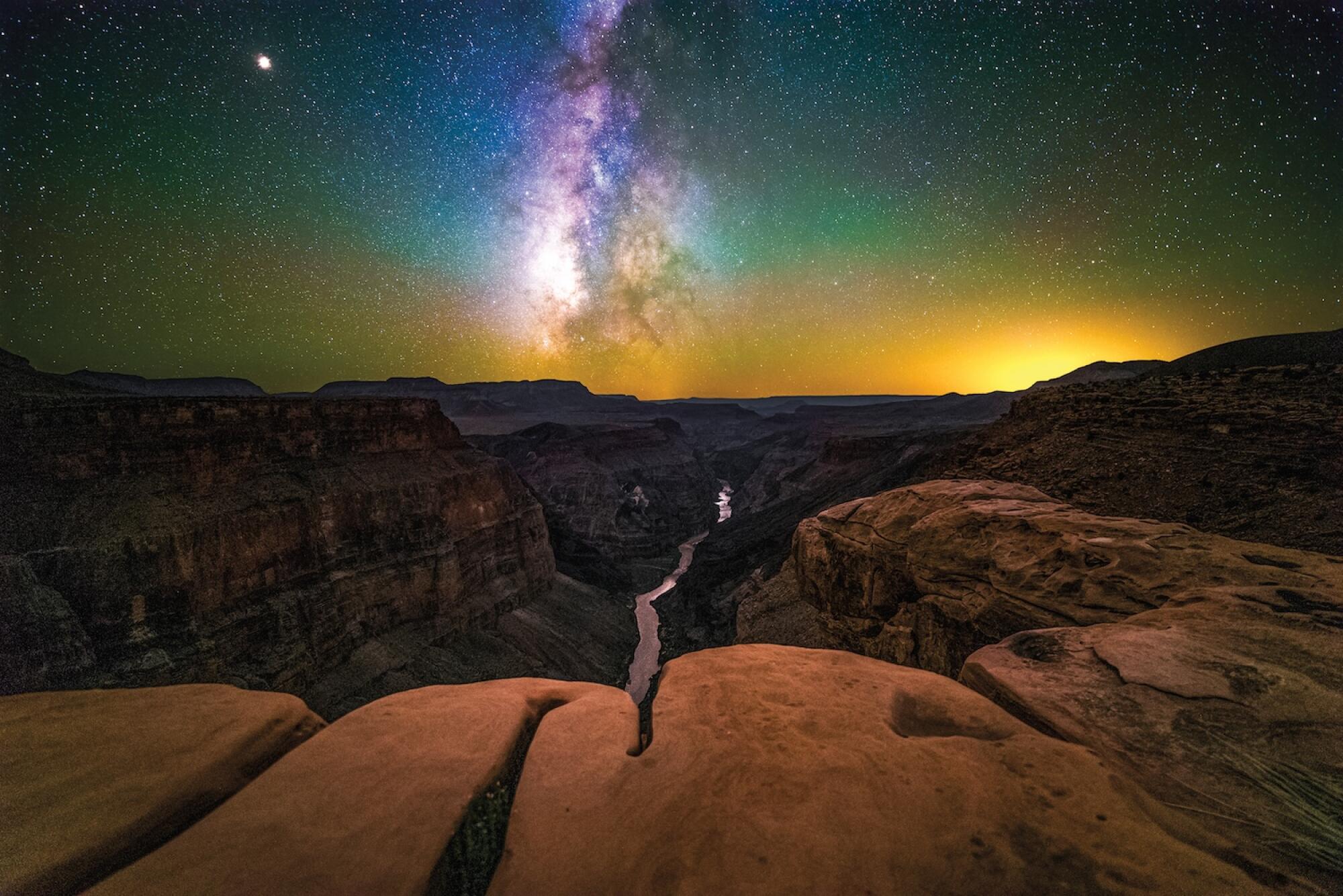
- Share via
Living in the environs of Los Angeles, like about 10 million of us, the dark night sky is something we rarely see. In fact, it’s estimated that it takes driving two to three hours away from the center of the City of Angels to actually begin to be in what’s called a “dark sky environment.”
But those of us that love that dark sky experience know that a weekend jaunt to places where there truly is little or no ambient light results in a breathtaking experience, especially on a clear night when the Milky Way unfurls in all its amazing glory, with more stars twinkling than we can ever count. Here are our favorite places that will take less than five or six hours to get to from L.A. – and trust us, they are completely worth the drive.

HEAD EAST TO THE BIG THREE To discover the best spots for stargazing, consult DarkSky International, the nonprofit organization that certifies locations around the world as International Dark Sky Places. Those can be “Sanctuaries,” “Reserves” or “Parks,” protected places that offer “exceptional or distinguished quality of starry nights and nocturnal environment that is specifically protected.”
California’s three Dark Sky-designated parks are all within easy weekend travel heading east from Los Angeles, with Death Valley National Park boasting the “Gold Tier” top rating and some of the darkest skies found anywhere. Their annual Dark Sky Festival happens in early spring when the weather is perfect, but be sure to book rooms at The Oasis at Death Valley resort well ahead to stay right in the park (you can do that any time of the year, but remember that summers can be brutal). Night sky ranger programs happen all winter long and the park service suggests you visit during the new moon phase – that’s when the stars will be at their brightest.
Joshua Tree National Park is the closest Dark Sky Park to Los Angeles, a place that has recently become very trendy with the chic L.A. set, leading to higher lodging prices but also more interesting and delicious restaurants popping up nearby. But it remains the dark sky spot where the Mojave and Colorado deserts meet and where you can still pitch a tent (there’s even a KOA Campground nearby) and gaze at the Milky Way.
To reach the huge Anza-Borrego Desert State Park, the third California-designated Dark Sky Park, head southeast from L.A. and discover this UNESCO Biosphere Reserve that encompasses part of both the Mojave and Colorado deserts. Hot in summer and cold in winter, with incredible spring wildflower superblooms in certain years, one thing remains the same – it’s a very dark place with incredible stargazing possibilities at campsites found across the park. The quaint town of Borrego Springs is a perfect home base – itself designated as an International Dark Sky Community – that offers plenty of resorts, hotels and camping and RV sites for a weekend’s enjoyment.

MORE IDEAL DARK-SKY SPOTS
The low desert areas in Southern California have numerous spots to get away from the big city/bright lights, beginning with the Mojave National Preserve, found off the I-15 near Baker. You can camp in an RV or tent in very rustic and very dark spots that reveal a sky full of stars, planets and more (especially if you bring your own telescope).
The Salton Sea State Recreation Area to the southeast has campsites and extremely dark areas for camping or just star gazing late into the night, while the Red Rock Canyon State Park to the north of L.A. offers sandstone rock formations, wildflowers in the spring and dark skies all year round, with campsites that are perfect for staying up late to see the stars.
A more unexpected place for a unique dark-sky experience is up the 101 freeway in Paso Robles, where British artist Bruce Munro’s Sensorio is an immersive nighttime art installation that melds lights gorgeously with the night sky. Be sure to book there as the sun sets, then stroll through the acres-large exhibit and watch the artwork, “Field of Light,” come to life along with the natural night sky. It’s a spectacular encounter, especially with a glass of Paso wine as an accompaniment.

If you’ve got more than a weekend to devote, road trip further east to Arizona, and visit some its 11 certified Dark Sky Parks, including the Grand Canyon National Park, Oracle State Park and the Petrified Forest National Park. For some really rugged adventure featuring incredible dark-sky places, jump on the Park to Park in the Dark route, beginning in Death Valley and winding across Nevada’s “astro-tourism” desert route to Great Basin National Park, another certified Dark Sky Park that often reveals the Milky Way and Mars, Jupiter and Saturn to the naked eye.
- Jenny Peters